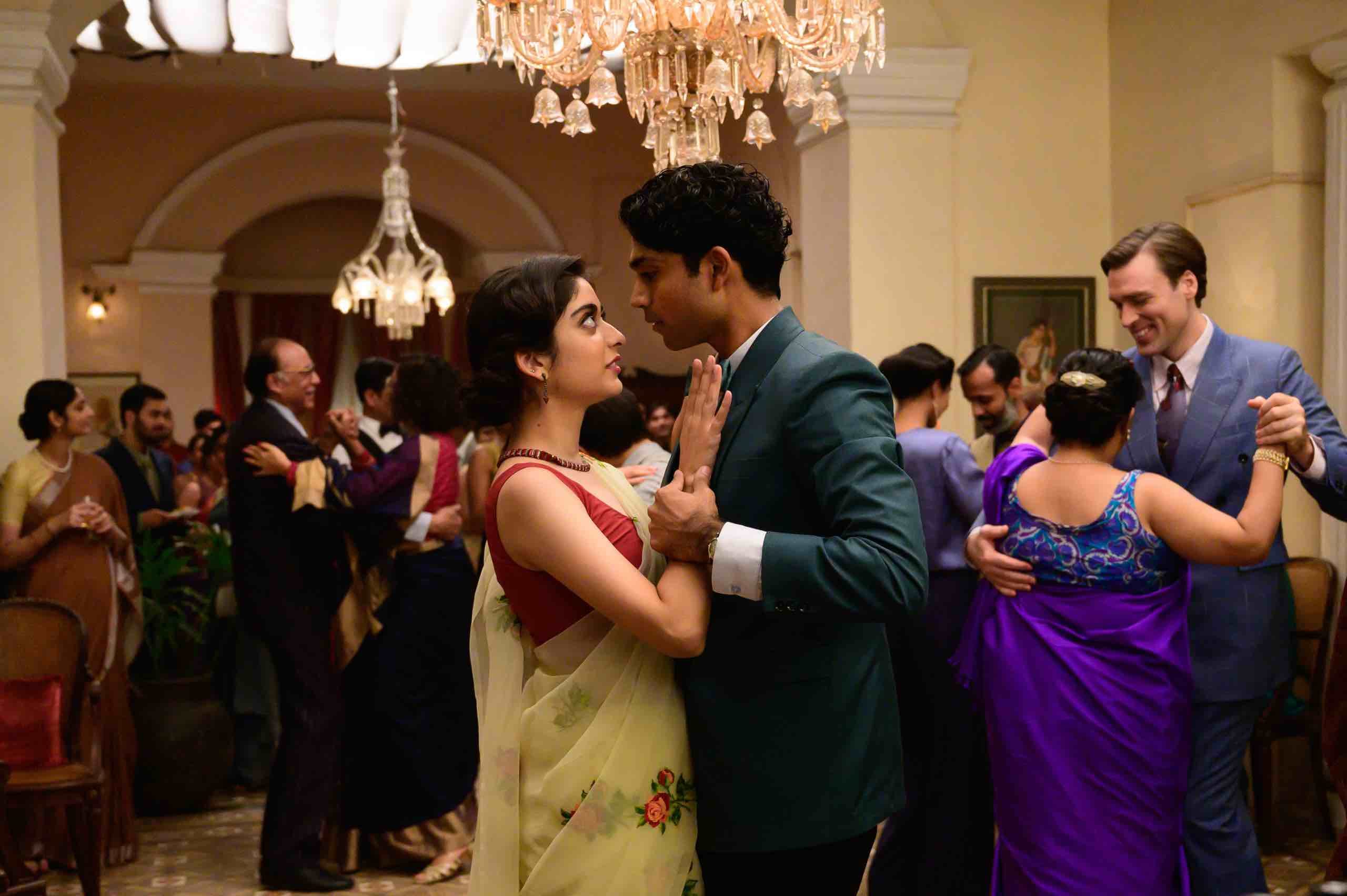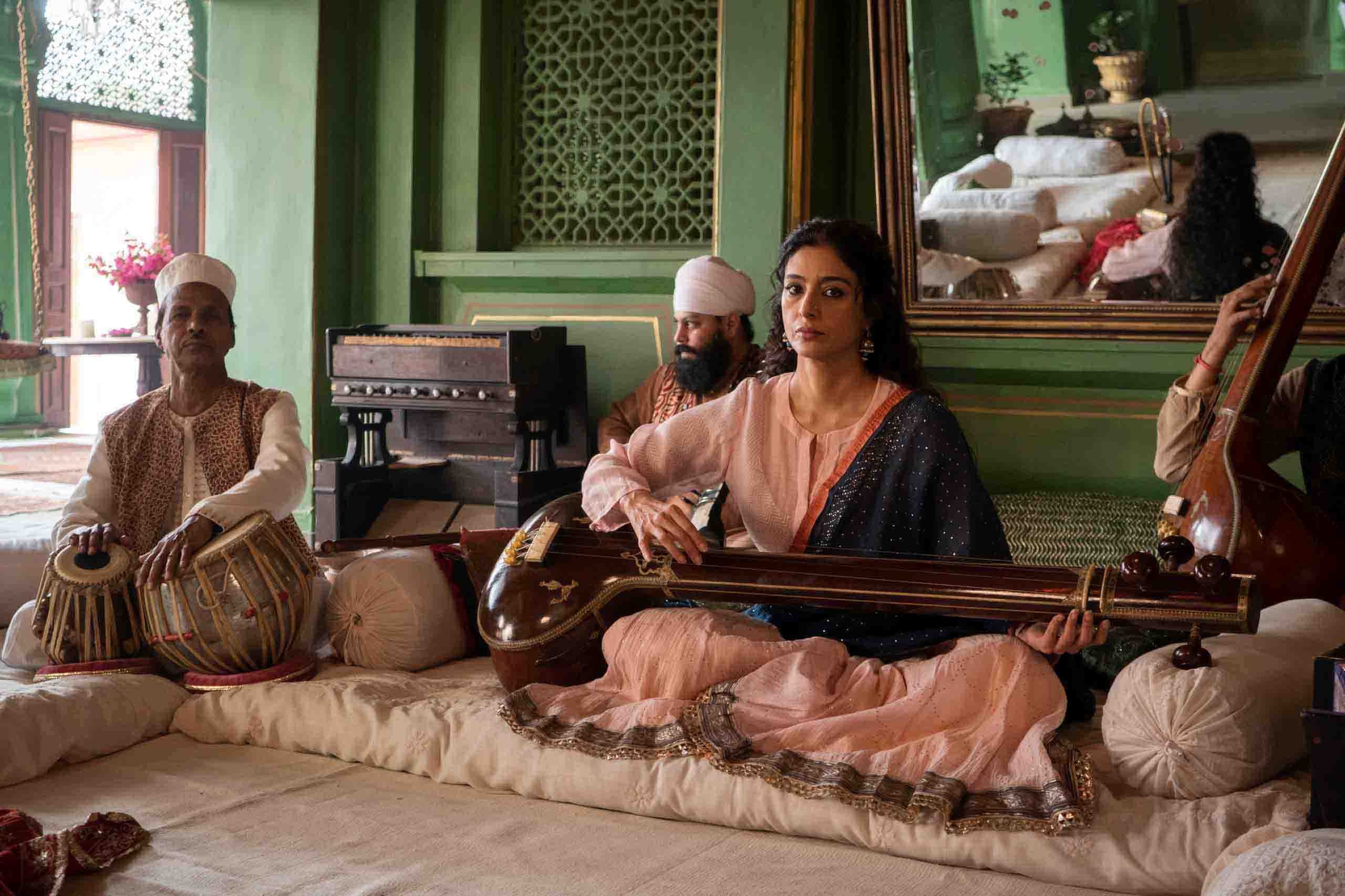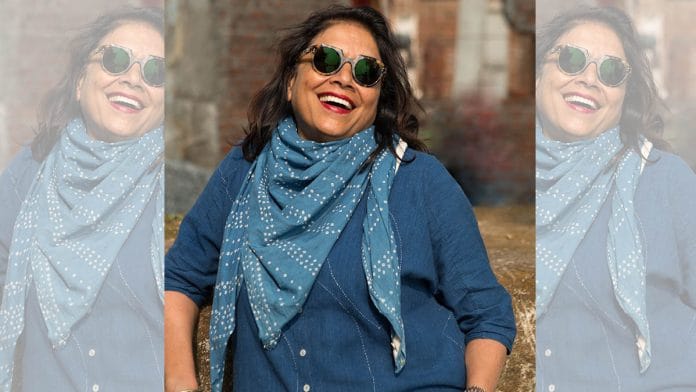New Delhi: Mira Nair’s much-awaited adaptation of Vikram Seth’s epic novel A Suitable Boy, the BBC’s first-ever period drama starring only people of colour, has finally dropped on Netflix, turning the clock back to the India of the 1950s.
On the face of it, Seth’s sprawling 1993 novel (it was 1,300 pages in its original edition, later editions have gone upwards of 1,500 pages) is about four families and is centred on one Mrs Rupa Mehra’s main goal in life — to find a husband for her younger daughter, Lata.
But it is actually so much more than that. It is an evocation of India as it was.
Set in the early 1950s, the book is rooted in its milieu of a newly independent nation, bruised and battered from the trauma of Partition, preparing for its first general election, and struggling, amid bloody religious conflict, to hold on to, and yet re-imagine, the idea of India. And director Mira Nair was determined that her six-part adaptation would highlight this.
The series stars Tanya Maniktala, Mahira Kakkar, Tabu, Ishaan Khatter, Shahana Goswami, Ram Kapoor and Rasika Dugal, among others.
Also read: How women are now rewriting the rules of Bollywood, with help from Netflix, Amazon
Less about marriage, more about politics
“Back in 1993, when I read the book, I loved it so much that I read it again, immediately — which is saying something, given its size! It felt, like all the great books do, that you’re with your best friend and you don’t want them to go away,” Nair tells ThePrint.
She knew she didn’t have the wherewithal — financial or otherwise — to make a cinematic adaptation at the time, but that sensibility informed her subsequent projects, notably Monsoon Wedding (2001). Meanwhile, she worked on other projects and knew vaguely that various versions of the novel were being attempted.
But in 2017, she heard there were producers seriously running around India trying to put a show together, and that spurred her. “I called up the BBC and said, ‘Look, I’m the one, I’ve got to do this.’ I showed them a look-book I had once made for ASB. There was no big race or competition then, they didn’t need further convincing.”
At the time, screenwriter Andrew Davies had already written eight one-hour drafts, and while Nair liked them, her idea was a little different. “I wanted to shift away from the whole Pride and Prejudice and who-will-Lata-marry tone, and balance it with the idea that Lata and Haresh [one of her three suitors] were the new India,” she explains.
“I wanted it to be more about the marriage of politics. And that is also because I think what Vikram wrote about — what our country had gone through — was so eerily prescient when you look at what’s happening today.”
The book’s rootedness in the Nehruvian ideas of secularism and pluralism was precisely what drove Nair to make this web series now, in 2020. “It evokes a time in India that I wish I was born in — I was 10 years too late! But it was the time of my parents’ shaadi, just like so many characters in the book, a time of them creating a new life. My parents were leaving Punjab, coming to Odisha (then Orissa), as my father was part of the civil services, setting up a new capital, working to build India, and I was born in that idealism,” she says, nostalgically.

Pluralism in India is evaporating
Fans of Seth’s writing and Nair’s films will note that there is a certain similarity in their talent for drawing out the intricacies of the lives and personalities of their characters — their skill at, on the one hand, creating worlds that immediately feel familiar, and on the other, showing worlds that exist right next to us but are left unexplored.
Point this out to Nair and she says this is exactly what she loves about Seth’s book. “The way he shows the circus, the layering of where we come from — the Anglicised families along with the rural hinterland. My work right from the start has always been about that circus, about how we live in our country, cheek-by-jowl with those who have everything and those who don’t have anything, with so many different classes, religions, communities. That pluralism is what I loved and what really inspired me.”
And the fact that this pluralism seems to be evaporating is something that Nair was conscious of as a maker. “Cinema has always been a vibrant commentator on our country, but these days, the way everything is being clamped down upon, it’s crazy!” she rues.
“With this project, I was getting into something that was already extraordinary, I was clear it had to emphasise the things I thought were important. It was meant to hold a mirror to where we have come from, to tell younger folks — and to remind older folks — that this is what our history is: Partition had just happened, with all its trauma, but still, we had such an incredibly syncretic way of life, in our language, our music, our poetry.”
In the series, music plays a major role. In every episode, a fair amount of screen time is devoted to the music of Saeeda, the courtesan, played by Tabu.
“Saeeda’s music was my oxygen, in a sense. It is not just her craft, but her commentary on the action taking place around her, the drama, the conflict,” says Nair.
But it was not so easy to convince the BBC about so much song. “They could not understand why there was so much music!” she laughs. “They were like, okay, is this some sort of musical interlude style, like Bollywood? I was like, if you’re making a film on an opera singer, then you f*****g have to have opera!”
For Nair, the show was meant to showcase India’s history of cultural heterogeneity, and Saeeda’s songs “are so much a part of a non-majoritarian culture, so I was determined to highlight that”.

Also read: Smita Patil in Aakhir Kyon? is an example of how art and mainstream films aren’t so far apart
Any adaptation involves ‘killing your darlings’
For Nair, the challenge was not just to distil a massive tome down to the essence of what she wanted to convey, but to do it within six one-hour episodes. It was a Herculean task, more so because of her love for the book and the many characters that she simply could not include.
“I know we could have done much more, lengthwise. But I am also very pragmatic, I know what the market can handle, and I’m just happy that I got to do what I wanted to do in those six hours. Adaptation at any level is about killing one’s darlings,” says Nair.
“For instance, the book has a whole section on Veena and Kedarnath, Bhaskar’s parents, a lovely bit in Old Delhi and I know people would like that, but there was just no way I could include it. However, the person I did not want to lose was Bhaskar. So I cooked up the angle that the parents had gone to Pakistan to get their property back. I also missed Kabir’s father, Professor Durrani. He ties in so nicely to Haresh’s democratic way of thinking, how he brings people together — that’s Haresh’s great attribute that Lata sees in him later.”
Of course, when the show was being made, no one had any idea that a pandemic was on its way, which would keep people in lockdown in their homes, watching more shows and movies than before on Netflix and other streaming platforms. While Nair’s not feeling the pressure so much (“woh toh chalta rehta hai”), she just hopes people watch it on a proper screen and not on their phones. “I only know how to make cinema, and that’s how we’ve made it — it is cinema, it is about the visuals, about being immersed in 1950s India.”
This is also why she is happy that unlike in the UK where it came out in weekly episodes, in India, the entire series will drop at once. For her, this is an ode to an India that was, and it is meant to be enjoyed as India was — everything at once.
Also read: What it is like to watch a movie at a theatre now that cinemas have opened after seven months







Could not sit through even half of the first episode. Ms.Nair caters only to the lopsided idea of secularism that exists in India today and having roots in so called nehruvian secularism. Bash the majority and appease minority. What else can we expect from BBC though? This British corporation still plays divide and rule.
A suitable boy? More like A suitable India – to pseudo secular tastes!
Communities living next to each other is NOT pluralism. Communities living next to each other peacefully is pluralism. Perhaps Mira Nair would like to tell us what happened to plural India that it got divided on religious lines?
Yes India, Nehruvian or otherwise has always been wonderful for those of the privileged class to which Mira Nair belongs. The politicos, crony businessmen, haughty bureaucrats, the snobbish academics, the judiciary and law & order machinery and all the rest of the deracinated elite establishment. The trouble has been only for those not a part of this entitled cohort. The India with abysmal standards of human existence with near zero access to healthcare, education, economic freedom and any other semblance of human dignity and decent governance. This has been the India since 1947 and earlier. If this is what the filmmaker misses and wishes to return to or continue perpetuating then no thank you.
I didn’t know Nehru had ownership and Intellectual property on India’s Secularism & Pluralism. I think we should move on from this so called concept of “Nehruvian Secularism “. India has always been Plural long before there was any Nehru and will continue to be Secular without appeasing any particular community and following “Pseudo Secularism ” under the garb of Secularism.